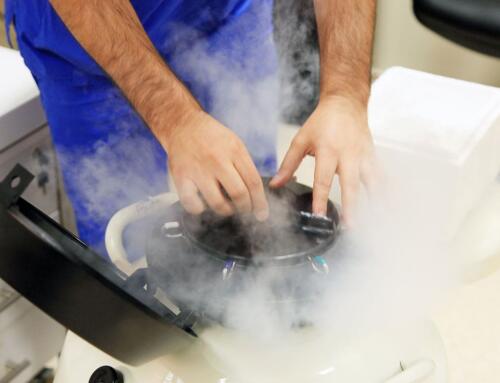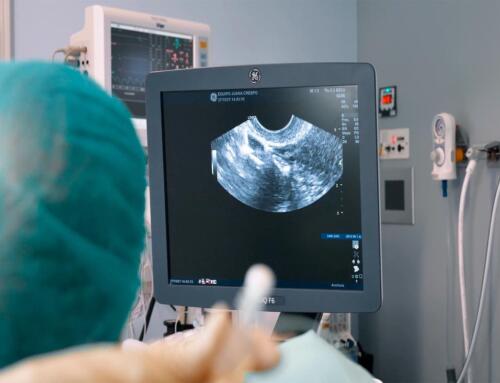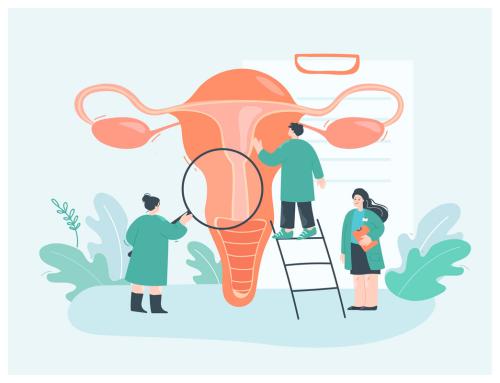Obstruction of the fallopian tubes is one of the most frequent problems of couples who come to assisted reproduction clinics such as ours: it is estimated that about 24% of cases of female infertility are linked to some kind of alteration in them, including blockage, inflammation or problems of patency or mobility.
Most women do not have any obvious symptoms, although when the inflammation or plugging is due to an infection that generates pus, the symptoms of tubal obstruction may be pain, discomfort or fever.
Otherwise, it may take years for the tubal obstruction to be detected, usually because the patient desires pregnancy, does not achieve it and a fertility study is performed.
Causes of fallopian tube obstruction
The fallopian tubes, also called “oviducts”, are two structures that connect the ovaries to the uterus and whose function is to transport the egg before and the embryo after fertilization.
To perform both functions, the tubes must be permeable and have good mobility, since, by means of suction movements, they capture the oocyte for its encounter with the spermatozoon and “push” the embryo to the uterus.
The fallopian tubes are very delicate ducts. Any obstruction that prevents their correct functioning is considered to cause infertility due to tubal factor, although there is a nuance: while it is true that a unilateral obstruction (in only one tube) hinders natural pregnancy, but does not make it impossible, in bilateral obstructions (in both tubes) natural pregnancy is impossible.
The main causes of fallopian tube obstruction are:
Salpingitis
Salpingitis is an inflammation of the fallopian tubes caused by an infection, usually ascending through the vagina and uterus as a result of a sexually transmitted disease (gonorrhea or chlamydia). Sometimes the infection comes from other nearby organs, such as the appendix.
Hydrosalpinx
Hydrosalpinx is a disorder of the female reproductive system characterized by dilation and distension of the fallopian tubes due to obstruction at their most distal end.
This is where the fimbriae are found, formations of filamentous aspect and constituted by cells with motile cilia that transport the ovum and the spermatozoa. When these fimbriae are damaged, they adhere and cause an accumulation of liquid that ends up obstructing the duct.
Generally, hydrosalpinx is the result of an infection or untreated salpingitis. Some of the risk factors associated with its occurrence are endometriosis, previous surgeries, IUD use, ectopic pregnancy and tubal tuberculosis.
Pionsalpinx
Pionsalpinx is an acute inflammation of the fallopian tubes due to a complication of pelvic inflammatory disease.
In this case, the tubes get blocked because they are filled with pus, and require immediate treatment to avoid abscesses in the pelvis.
Pionsalpinx is usually a tubal obstruction with symptoms, including pain in the lower abdomen, fever or vaginal secretions with strong and unpleasant odors.
Sometimes the infectious process subsides with antibiotics. In other cases, it requires laparoscopic intervention to remove the pus.
In the most severe cases and if the infection spreads, it may be necessary to perform a salpingectomy (to remove one or both tubes), an oophorectomy (to remove one or both ovaries) or a hysterectomy (to remove part or all of the uterus).
Endometriosis
Endometriosis is the growth of endometrial tissue outside the uterus. When the tissue grows in the tubes, the tubes become blocked.
Congenital tubal obstruction
Some women have tubal abnormalities from birth due to congenital diseases, malformations or dysfunctions.
Fallopian tube obstruction: what is its treatment?
Fallopian tube obstruction is diagnosed by means of techniques such as hysterosalpingography and hysterosalpingosonography, which make it possible to evaluate tubal patency and detect obstructions.
The first consists of passing a radiopaque iodinated contrast medium through the cervix, through a catheter, which is recorded for X-ray viewing. In the second, no contrast medium is used, but a physiological saline solution or a foaming gel is used to check and observe tubal transit by transvaginal ultrasound.
Regarding the treatment of tubal obstruction, it depends on the exact cause of the obstruction: if the cause is an infection, antibiotics will be indicated; in other cases, laparoscopic surgery (in the case of endometriosis or adhesions, in order to unclog and repair the tubes), salpingectomy or tubal occlusion (in cases of hydrosalpinx) may be recommended.
In the latter case, both treatments may be necessary depending on the origin of the infection, its evolution and whether the patient wishes to become a mother.
Can a woman with tubal obstruction become pregnant?
Currently, tubal pathology has a solution and it is possible to achieve a pregnancy in a natural way if we are talking about unilateral obstructions and if the woman ovulates regularly, although the options will be reduced by half.
However, the fallopian tubes are very fine and delicate organs, and although we can eliminate the obstruction, we do not always get them to function optimally.
In cases of irreversible tubal obstruction, both unilateral and bilateral, the recommendation is to go to a specialized clinic like ours.
Think that in treatments such as In Vitro Fertilization the eggs are obtained directly from the ovary to be fertilized in the laboratory and, once the embryos are obtained, they are transferred directly into the uterus, being a treatment used for women who do not have functional fallopian tubes.
Do you have any questions about your fertility? Get in touch with us.
















